Date 21 March 1968 | ||
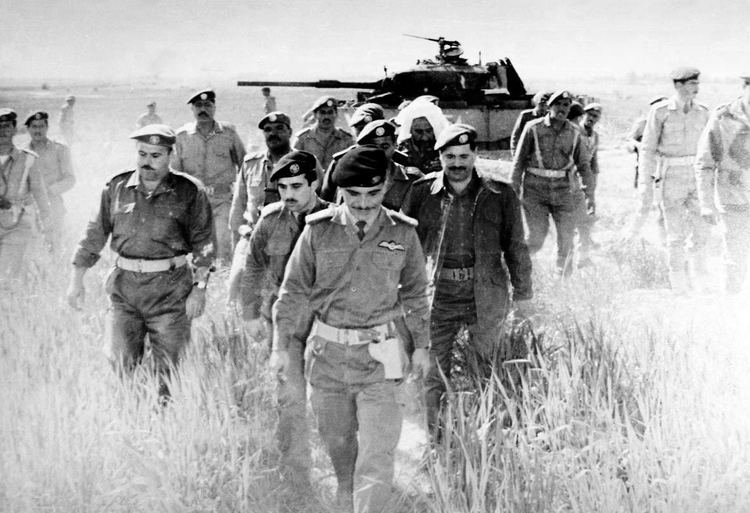 | ||
Israel28– 33 dead69 – 161 wounded27 tanks hit, 4 left behind2 Armored personnel carriers2 vehicles1 aircraft Jordan 40- 84 dead108- 250 wounded4 captured28 tanks hit, 2 capturedPLO156 dead~100 wounded141 captured Combatants Similar | ||
Battle of karameh
The Battle of Karameh (Arabic: معركة الكرامة) was a 15-hour military engagement between the Israel Defense Forces (IDF) and combined forces of the Palestine Liberation Organization (PLO) and the Jordanian Armed Forces (JAF) in the Jordanian town of Karameh on 21 March 1968, during the War of Attrition. It was planned by Israel as one of two concurrent raids on PLO camps, one in Karameh and one in the distant village of Safi—codenamed Operation Inferno (Hebrew: מבצע תופת) and Operation Asuta (מבצע אסותא), respectively—but the former turned into a full-scale battle.
Contents
- Battle of karameh
- Background
- Prelude
- Battle
- Aftermath
- Israeli historiography
- Jordanian and Palestinian historiography
- References
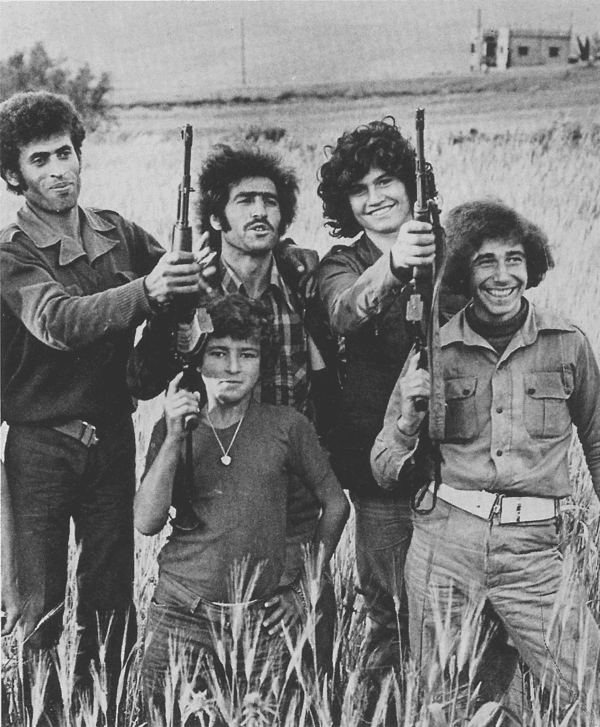
After the Six-Day War in 1967, the PLO and Fatah stepped up their guerrilla attacks against Israel from Jordanian soil, using the border town of Karameh as their headquarters. Though the Israeli invasion, whose purpose was to destroy the Palestinian militant camps at Karameh and capture Yasser Arafat, was primarily motivated as a reprisal for these new attacks, the two operations had been prepared a year earlier. It is also believed that Israel wanted to punish Jordan for its support to the PLO. The Jordanian assessment of the dimensions of the force Israel had dispatched for the raid was that Israel entertained a further goal, that of capturing the Balqa Governorate to create a similar situation to that in the Golan Heights. Though Israel assumed the Jordanian Army would choose to not get involved in the battle, the latter deployed heavy fire on the attacking Israeli forces while fighting alongside the Palestinians. The engagement marked the first known deployment of suicide bombers by Palestinian forces. The Israelis withdrew, or were repulsed, after a day long battle, having destroyed most of the Karameh camp and taken around 140 PLO members prisoner. The battle resulted in the issuance of the United Nations Security Council Resolution 248, which condemned Israel for violating the cease-fire line and its disproportionate use of force.
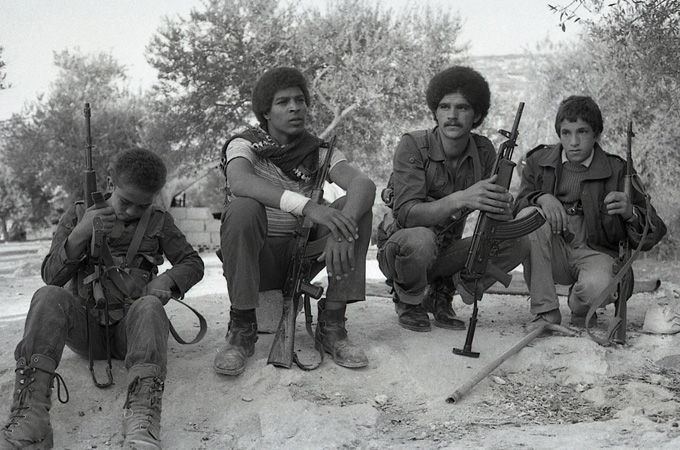
Both sides declared victory. On a tactical level, the battle went in Israel's favor, and the aim of destroying the Karameh camp was achieved. On the other hand, the relatively high casualties sustained came as a considerable surprise for the Israel Defense Forces and stunned the Israelis. On a rare occasion, Israel failed to retrieve three dead soldiers, who were left behind in Karameh along with several damaged Israeli vehicles and tanks, later paraded in Amman by the Jordanians. Although the Palestinians had limited success in inflicting Israeli casualties, King Hussein let them take credit. Palestinians used the battle's wide acclaim and recognition in the Arab world to establish their national claims. After the battle, King Hussein proclaimed, "I think we may reach a position where we are all fedayeen". As the PLO's strength began to grow in the aftermath of the battle, Palestinian fedayeen began to speak openly of taking over Jordan, and the ensuing tensions eventually precipitated in the expulsion of Fedayeen to Lebanon during the events of Black September in 1970.
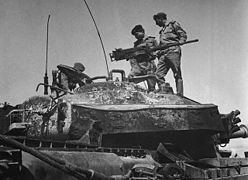
Background
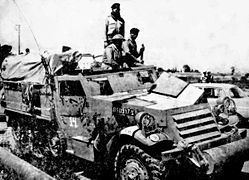
Palestinian groups used to initiate few attacks on Israeli targets from both the West Bank and Jordan before the Six-Day War, some of which caused Israel to retaliate which became known as the Reprisal operations. Following the seizure of the West Bank from Jordan in the June 1967 Six-Day War, Israel destroyed the existing Palestinian group Fatah networks there. In early 1968, however, Fatah guerrillas began raiding Israel from bases on the Jordanian side of the river. Most of these attacks were blocked by the Israel Defense Forces. At times, Jordanian Army infantry and artillery units gave the Fatah squads covering fire, leading to frequent direct skirmishes between the IDF and the Jordanian Army. On 14–15 February, Jordanian mortars hit several Israeli settlements in the Beit Shean Valley and Jordan Valley. Israeli artillery and air forces retaliated against Jordanian bases and artillery batteries, as well as the American-financed East Ghor Canal (now known as the King Abdullah Canal). As a result, thousands of Jordanian farmers fled eastwards, and fedayeen (agents willing to sacrifice themselves for the Palestinian cause) moved into the valley. An American-sponsored ceasefire was arranged, and King Hussein declared he would prevent these groups from using Jordan as a base for attack.

In February, King Hussein sent twenty carloads of troops and police to order a Fatah unit to leave the town of Karameh. When it arrived, the column found itself surrounded by men wielding machine guns; their commander said "You have three minutes to decide whether you leave or die". They withdrew. By March, several hundred civilians lived in the camp, along with about 900 guerrillas, mostly from Fatah, and PLO leader Yasser Arafat, who had his headquarters there.
In Israel, Chief of the Military Intelligence Directorate Aharon Yariv stated that a raid would damage Fatah's prestige. On the other hand, Israeli Foreign Minister Abba Eban and his chief of bureau Gideon Rafael — mindful of an adverse American reaction due to the good relationship between Jordan and the US — worried a raid could result in innocent civilian deaths and be a political disservice to Israel. Chief of Staff Haim Bar-Lev promised a "clean action". Israeli Defense Minister Moshe Dayan asked for a "principal approval" for a raid, but this was denied by the cabinet. On 13 December, Operation Karameh was scheduled for the next night, it was placed in the hands of both Brigade 35 of the Paratroop Corps and the Sayeret Matkal special-operations force. The operation was called off, rescheduled for 12 March and then called off again. Dayan warned the other ministers that a bus might strike a mine. On 18 March, an Israeli school bus was blown up by a mine near Be'er Ora in the Arava, killing two adults and wounding ten children. This was the 38th Fatah operation in little more than three months. That night, the cabinet approved the attack. The U.S. tried to prevent it by forwarding Israel a message from King Hussein. Israeli Prime Minister Levi Eshkol called in the cabinet for further counseling; only the National Religious Party leader Haim-Moshe Shapira vocally opposed the attack, while Education Minister Zalman Aran opposed it too but remained silent. There was an intelligence informant who was a former Fatah member, code-named "Grotius" who was said to be familiar with the base in Karameh and its surroundings. Grotius is said to have arrived in Jordan as a member of the 421st Commando Battalion of the Palestine Liberation Army, on the eve of the Six-Day War. After deserting his battalion, he trained in Syria at the Hama camp and later slipped into the West Bank. Israel assumed that the Jordanians would ignore the invasion, however, the Israelis were met with heavy resistance from them.
Prelude
On 4 March, Jordanian intelligence began to detect Israeli activity near the border, as IDF troops began to concentrate near the Allenby Bridge (known now as King Hussein Bridge) and Damia Bridge (known now as Adam Bridge). Jordan ordered the 1st Infantry Division to take up positions near those bridges and around Karameh. On 17 March, Dayan warned that the fedayeen were preparing for a "new wave of terror," which Israel would take steps to contain if King Hussein of Jordan could not. Eshkol repeated that message to the Knesset, and on the same day, Israeli Ambassador Yosef Tekoah filed two complaints with the United Nations against what he termed "the Arabs' repeated acts of aggression."
By 20 March, Jordan had identified parts of the Israeli 7th Armored Brigade, 60th Armored Brigade, 35th Paratroop Brigade, 80th Infantry Brigade, a combat engineer battalion and five artillery battalions between Allenby and Damia bridges. The Jordanians assumed the Israelis were planning an attack with a drive on Amman, and the army took up positions near the bridges, with the 60th Armored Brigade joining the 1st Infantry Division. Jordan also added most of its armored car, antitank and artillery units to the 1st Infantry Division. The total firepower was 105 Patton tanks and 88 artillery pieces. The infantry divisions were deployed near the bridges, each with a tank company. The artillery was mostly deployed on the higher Jordan Valley ridges overlooking Karameh for topological advantage.
The Israeli forces amounted to less than a brigade of armor, an infantry brigade, a paratroop battalion, an engineering battalion and five battalions of artillery. The units were divided into four task forces. The largest of these was to cross the Allenby Bridge and reach Karameh from the south; a second one was to cross the Damiyah Bridge, and reach Karameh from the north, thus completing a pincer move. Meanwhile, paratroopers were to be lifted by helicopters into the town while the fourth force would make a diversionary attack at King Abdullah Bridge to draw the Jordanian forces from Karameh and to cover the main attack.
Prior to the attack, the Israeli Air Force (IAF) dropped leaflets telling the Jordanian army that Israel had no intention to hurt them, and that they should not intervene; the leaflets went unheeded. Time magazine reported the fedayeen had been warned in advance by Egyptian intelligence, and most of the 2,000 Arab commandos who used Karameh as a training base had pulled back into the surrounding hills to snipe at the Israelis. Some 200 guerrillas stayed inside to defend the town. Later, Arafat's deputy, Abu Iyad, claimed in his memoirs that he and Arafat had been tipped off about the Israeli attack by Jordanian officers, who learned it from the CIA.
Battle
At 5:30 AM on 21 March, the Israeli forces attacked simultaneously on the three bridges. Combat engineers built a pontoon bridge in the north and the troops crossed the river. The Israeli spearheads pushed across the Allenby Bridge and advanced towards Shunat Nimreen.
At 6:30 AM, Israeli helicopters started landing the bulk of the paratrooper battalion north of Karameh. An Israeli aircraft was supposed to drop leaflets addressed to Fatah, after the paratroopers had surrounded the town; however, due to difficult weather conditions, the helicopters flying the paratroopers arrived twenty minutes too late. Met with resistance by Fatah commandos and Jordanian regulars supported by Jordanian artillery, the paratroopers suffered heavy losses. When the southern task force began their drive north towards Karameh, they encountered a Jordanian infantry brigade supported by armor, artillery and antitank weapons. The Israeli Air Force launched airstrikes, but was only able to inflict minor damage on the dug-in Jordanians. Fighting from their entrenched positions, the Jordanians repelled several Israeli assaults.
In the south, Jordanian artillery shelling prevented the Israelis from erecting another pontoon bridge on the site of the Abdullah bridge, halting the Israeli advance there. After crossing the Allenby Bridge, the 7th Armored Brigade spread in three directions from Shuna: One or more companies drove north to Karameh. An infantry battalion and a tank battalion moved east to block the Salt road. And another infantry battalion moved south to assist the force trying to break across the Abdullah Bridge. Meanwhile, the force that crossed the Damia Bridge established itself on the east bank. Engineers began constructing a new bridge, and the force advanced east to the Musri junction. After taking Musri, their intended advance south to Karameh was repulsed by the northern brigade of the Jordanian 1st Division.
The force driving on Karameh via the Allenby bridge broke through and proceeded to the town, arriving shortly before 7:00. By 8:00 the Israeli forces had taken control of the town, which turned out to be a bigger PLO base than the Israelis expected. Combined with the paratroopers, this Israeli force engaged in heavy fighting against the central brigade of the 1st division and a number of Fatah fighters. Some of the paratroopers and armor drove north to operate in the Fatah camp. The paratroopers destroyed most of the camp; many of the Palestinians, including Arafat, fled eastward. The rest of the Allenby Bridge force was blocked to the east and south of Shuna, by elements of the 1st Division's central and southern brigades, and by a tank battalion from Salt. A small force of Israeli infantry and armor, on the right flank of Israeli forces invading from the south, tried to protect the allenby bridge force from attacks by the Jordanian forces deployed near the King Abdullah bridge. The Jordanians attacked with some armor, but the Israelis put up resistance, and the battle turned into a stalemate.
A large force of Israeli infantry and armor went east to block the road from Salt to the Allenby bridge, and they encountered the Jordanian 60th Armored Brigade trying to join the defense of Karameh. In the resulting battle, the Jordanians lost eight Patton tanks without destroying any Israeli tanks, then withdrew to the hills to dig in and continue firing down on the Israelis. The Israeli Air Force launched airstrikes against Jordanian armor and artillery positions, but was unable to stop the firing. Within the next two hours, Israeli artillery fire and airstrikes were launched against Jordanian defenses on the Musri-Karameh road, the Salt road, and east of Abdullah Bridge. The Israelis also consolidated their hold on Karameh with airstrikes and artillery, and began demolishing the camp. A total of 175 houses were blown up.
Meanwhile, Operation Asuta was mounted against a few smaller guerrilla bases south of the Dead Sea, near Safi, where the school bus had struck the mine. The bases were raided by Israeli ground forces with close air support. About 20 Jordanian soldiers and policemen and 20 Fatah fighters were killed, and 27 were taken prisoner. The Israelis suffered no casualties. Frustrated in their hope to entrap the entire PLO force, the Israelis soon pulled out, but had to fight their way back to Israeli territory. At 11:00 the Israelis began to withdraw, with Sikorsky H-34 helicopters evacuating the troops. Because orders came down to recover as many vehicles as possible, they only completed their withdrawal by 20:40. They had planned a rescue for its two tanks which were left in Jordan, but later withdrew the plan.
Jordanian soldiers surrounding Israeli abandoned or destroyed trucks and tanks which were paraded across Amman and were put on display at the Hashemite Plaza.
Casualties estimates vary:
Aftermath
Israel accomplished its objective of destroying the Fatah camp, and on a tactical level, the battle did indeed end in Israel's favor. "The Karama operation exposed the vulnerability of PLO units deployed along the Jordan River and so they moved their concentrations up into the mountains. This imposed additional strains on them and made their operations into the West Bank even more involved and difficult than they had been hitherto." Politically however, Israel was heavily condemned by the world opinion. U.S. Ambassador to the UN, Arthur Goldberg, said "We believe that the military counteractions such as those which have just taken place, on a scale out of proportion to the acts of violence that preceded it, are greatly to be deplored." US Ambassador to Israel, Walworth Barbour, said that in twenty years time, a historian would write that day down as the beginning of the destruction of Israel. Eban reported the Ambassabor's statement to the cabinet, and Menachem Begin said such an utterance must not be cited in a cabinet meeting.
The relatively high casualties were a considerable surprise for the IDF and was stunning to the Israelis. Although the Palestinians were not victorious on their own, King Hussein let the Palestinians take credit. However, the battle of Karameh provided Fatah with a propaganda boost. The chief of bureau of the then Israeli Foreign ministry Gideon Rafael later said that "The operation gave an enormous lift to Yasser Arafat's Fatah organization and irrevocably implanted the Palestine problem onto the international agenda, no longer as a humanitarian issue of homeless refugees, but as a claim to Palestinian statehood". Uzi Narkis, who commanded the operation, resigned as chief of the Central Command for a position in the Jewish Agency shortly after the battle.
Jordan claimed to have won the battle and stopped an Israeli drive on Balqa Governorate in intentions of occupying it and turning into a security buffer zone, which was supposed to serve as a punishment, due to the Jordanian support to the PLO. The Jordanians made this assumption as they saw the size of the raiding Israeli forces entering the battle. Arafat said "What we have done is to make the world ... realize that the Palestinian is no longer refugee number so and so, but the member of a people who hold the reins of their own destiny and are in a position to determine their own future". Palestinians and Arabs generally considered the battle a psychological victory over the IDF, which had been seen as 'invincible' until then, and recruitment to guerilla units soared. Fatah reported that 5,000 volunteers applied to join within 48 hours of the battle. By late March, there were nearly 20,000 fedayeen in Jordan.
Iraq and Syria offered training programs for several thousand guerrillas. The Persian Gulf states, led by Kuwait, raised money for them through a 5% tax on the salaries of their tens of thousands of resident Palestinian workers, and a fund drive in Lebanon raised $500,000 from Beirut alone. The Palestinian organizations began to guarantee a lifetime support for the families of all guerrillas killed in action. Within a year after the battle, Fatah had branches in about eighty countries.
After the battle, Fatah began to engage in communal projects to achieve popular affiliation. The battle of Karameh and the subsequent increase in the PLO's strength are considered to have been important catalysts for the 1970 events of the civil war known as Black September, in which the kingdom managed to expel the Palestinian groups to Lebanon after they had started to gain control over Jordan.
Later, the United Nations Security Council issued resolution 248 which condemned the Israeli raid on Jordanian territory and the violation of the cease-fire line, it recalled on resolutions 237 which had encouraged Israel to ensure the safety of civilians in military areas. The resolution affirmed that reprisals were not to be tolerated and that repetitions of such violations would have forced the Security Council to take further steps.
The battle was the first engagement between the Israelis and Palestinians, in which the latter used suicide bombers.
In a 2011 report by Haaretz, files released by the IDF had contradicted the official Israeli story that claimed that the operation was a retaliatory for the bus incident. The files revealed that the IDF had plans for the two operations, prepared in 1967, one year before the bus incident. Files also revealed that the IDF had practiced crossing the Jordan River in 1966 during the Jordanian occupation of the West Bank.
Israeli historiography
Israel maintains that it had performed a coordinated withdrawal after achieving its goal of destroying the Karameh camp. However, few Israeli military personnel who participated in Karameh agree. According to Lt. Col. Arik Regev, chief of Central Command's operations branch,
Moshe Brblt, a sergeant in the Israeli Armored Corps later talked about his participation in Karameh "Everything was burning around me, and whenever I tried I could not get up."
Dr. Asher Porat stated "lessons of the operation became clear that it was a mistake to fight the Jordanian army."
Muki Betser, a commander in the Sayeret Matkal unit of the Israel Defense Forces wrote in his book,
Jordanian and Palestinian historiography
Arab history of the war mentions that Israel had entered the Battle of Karameh with too much confidence, since it took place just after Israel had defeated the Arabs in the 1967 Six-Day War. The size of the Israeli forces entering Karameh made the Jordanians assume that Israel was also planning to occupy the eastern plateau of the Jordan River basin, namely Balqa Governorate, in order to create a Golan Heights similar situation so as to be used a bargaining chip. Jordanians claim that Moshe Dayan invited Israeli journalists on the previous day for lunch in western Jordan after occupying it.
The Battle of Karameh was the subject of many artworks, stamps and posters.
